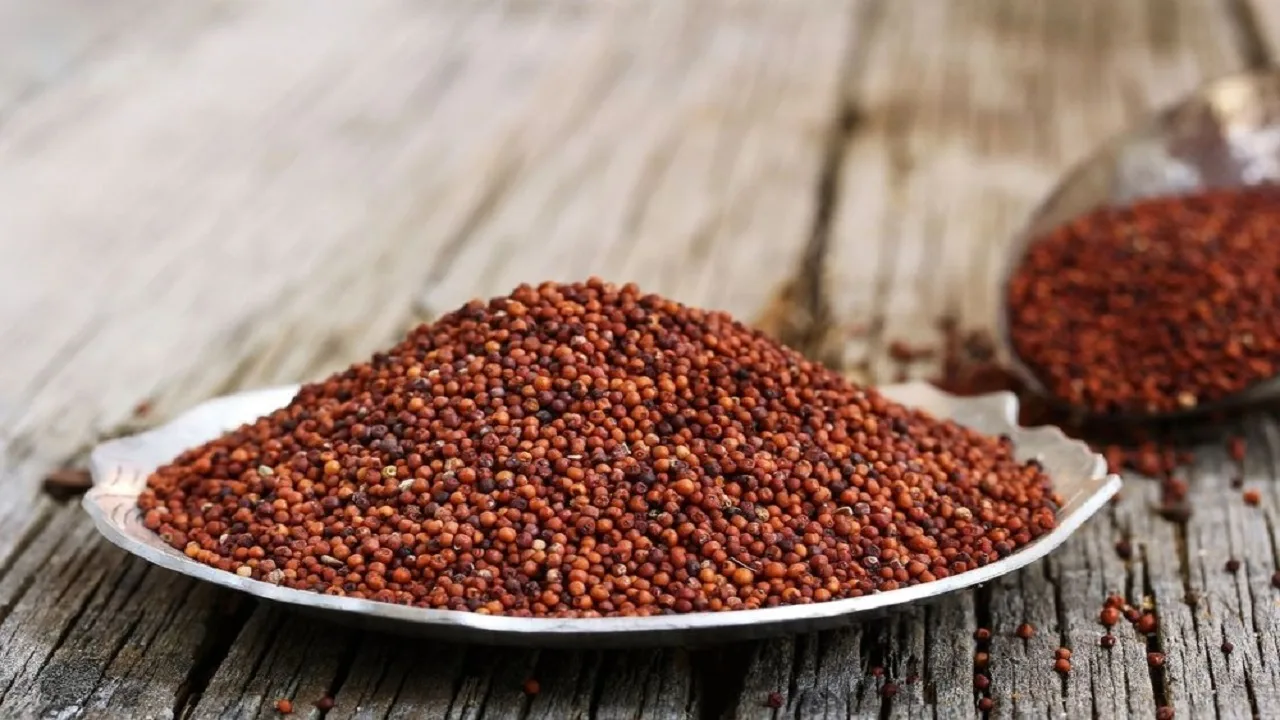Many tribes have relied on ragi, or finger millet, for generations. Its nutritious benefits and culinary variety make it popular in India and Africa. Recently, ragi has become a worldwide superfood due to its many health advantages. Ragi is a great diet component since it contains calcium, iron, and fiber. Ragi, like other meals, may have adverse effects, particularly in excess. Here are ragi’s health advantages, adverse effects, and easy ways to integrate it into your diet.
Health Benefits of Ragi
1. High in Calcium and Strengthens Bones
Ragi is one of the greatest plant-based calcium sources, making it ideal for bone and tooth strengthening. Calcium is vital for bone density and osteoporosis prevention, particularly in elderly persons. Ragi may promote bone health in youngsters, women (particularly post-menopausal women), and calcium insufficiency patients.
2. Weight Loss Aid
Ragi is great for weight loss. Its high fiber content keeps you full longer, decreasing snacking and overeating. Ragi fiber regulates digestion and avoids constipation. Ragi may help a weight-loss diet by reducing appetite and improving digestion.
3. Controls Diabetes
Ragi releases glucose slowly due to its low glycemic index. Diabetes patients and those seeking to regulate their blood sugar should eat this since it prevents rapid blood sugar rises. Ragi’s fiber and polyphenols decrease sugar absorption and preserve insulin sensitivity, improving blood sugar management.
4. Aids Digestion
Ragi is high in fiber, which aids digestion and controls bowel motions. Its fiber relieves constipation and improves gut health. Ragi is gluten-free, so persons with gluten sensitivity or celiac disease may enjoy its advantages without stomach difficulties.
5. Lowers Cholesterol
Ragi includes lecithin and methionine, which lower cholesterol by removing liver fat. And threonine prevents liver fat, lowering cholesterol. Ragi helps heart health and reduces cardiovascular disease risk.
Possible Ragi Side Effects
Ragi is nutritious and healthy, but too much might cause adverse effects.
1. Kidney Stone Risk
Ragi is heavy in oxalates, which may cause kidney stones in susceptible people. Those at risk of kidney stones should restrict their ragi intake or see a doctor before adding it to their diet.
2. Allergic Reaction Risk
Rarely, ragi allergies exist. Allergic reactions may include itching, rashes, breathing problems, and lip or throat swelling. If ragi causes allergic reactions, stop using and seek medical treatment.
3. May cause digestive issues in certain
Ragi aids digestion, but its high fiber content may induce bloating, gas, or discomfort in big amounts. Ragi should be introduced slowly to modify your digestive system if you’re not used to high-fiber diets.
Best Ways to Eat Ragi
Ragi may be used in many cuisines, making it simple to integrate into your regular diet. Enjoy ragi in these delightful ways:
1) Ragi Porridge
Ragi porridge is a common ragi consumption method. This easy, healthy meal is great for kids and seniors. Mix ragi flour with water or milk, simmer over low heat until thickened, then sweeten with jaggery or honey. You may add nuts and fruits for taste and nutrients.
2. Ragi Roti
Ragi flour makes a gluten-free, nutritious roti. Make ragi flour dough with water, roll it out, and fry on a hot pan. Serve this roti with curries or veggies for a healthy supper.
3. Ragi Malt
Ragi malt is a pleasant drink created by boiling ragi flour with water or milk and sweetening with jaggery or honey. It’s a popular option for a fast energy boost or healthy snack between meals.
4. Pancakes or Ragi Dosa
Mixing ragi flour with rice flour, water, and spices makes crispy dosas or soft pancakes. This flavorful meal is great for breakfast or supper. To complement the dish, add chutney or sambar.
